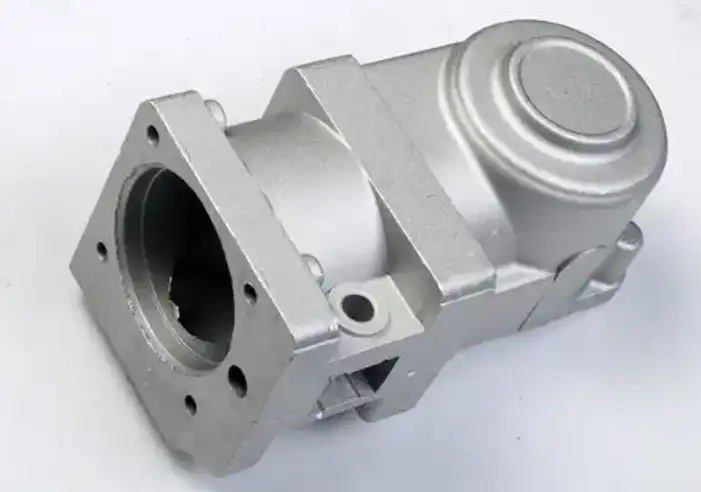What You Need To Know About Gravity Die Casting?
Gravity casting is a crucial manufacturing process in the metal industry, offering a unique blend of precision, efficiency, and cost-effectiveness. This method involves pouring molten metal into reusable molds, relying on gravity to fill the cavities and create intricate parts. Unlike other casting techniques, Gravity casting provides excellent surface finishes and dimensional accuracy, making it ideal for producing components in various sectors, including automotive, aerospace, and consumer goods. As manufacturers continually seek ways to improve product quality while reducing costs, understanding the nuances of Gravity casting becomes increasingly important. This blog post will delve into the essential aspects of this casting method, exploring its advantages, challenges, and applications to help you grasp its significance in modern manufacturing processes.

What are the key advantages of Gravity casting?
Enhanced surface finish and dimensional accuracy
Gravity casting offers superior surface finish and dimensional accuracy compared to other casting methods. The use of permanent metal molds allows for precise control over the casting process, resulting in parts with smooth surfaces and tight tolerances. This level of accuracy is particularly beneficial for components that require minimal post-casting machining, reducing production time and costs. The improved surface finish also contributes to better aesthetics, making gravity cast parts suitable for visible applications in various industries. Additionally, the consistent quality achieved through Gravity casting ensures reliable performance and longer lifespan of the manufactured components.
Improved mechanical properties
Gravity castings significantly enhance the mechanical properties of the final product. The rapid cooling of the molten metal in the metal mold results in a finer grain structure, which translates to improved strength, hardness, and overall durability of the cast parts. This process also minimizes porosity and internal defects, further contributing to the structural integrity of the components. The enhanced mechanical properties make gravity cast parts suitable for applications that require high strength-to-weight ratios, such as in the automotive and aerospace industries. Moreover, the consistent cooling rates achieved in Gravity casting lead to more uniform material properties throughout the part, ensuring reliable performance under various operating conditions.
Cost-effective production for medium to high volume runs
Gravity casting proves to be a cost-effective solution for medium to high volume production runs. While the initial tooling costs may be higher compared to sand casting, the reusable nature of the metal molds allows for significant cost savings over time. The process requires less labor and offers faster production cycles, leading to increased efficiency and reduced overall manufacturing costs. Additionally, the minimal need for post-casting machining further contributes to cost savings. Gravity casting also allows for the production of near-net-shape components, reducing material waste and associated costs. For manufacturers looking to balance quality with cost-effectiveness in medium to high volume production, Gravity casting presents an attractive option.
How does Gravity casting compare to other casting methods?
Gravity casting vs. sand casting
Gravity casting and sand casting are two distinct methods with unique advantages. While sand casting offers flexibility in terms of part size and complexity, Gravity casting excels in producing parts with superior surface finish and dimensional accuracy. The use of permanent metal molds in Gravity casting results in faster production cycles and better repeatability compared to sand casting. However, sand casting remains advantageous for low-volume production or extremely large parts that may not be feasible for Gravity casting. The choice between these methods often depends on factors such as production volume, part size, and required surface finish.
Gravity casting vs. Pressure die casting
Gravity casting and pressure die casting are both metal casting processes, but they differ in their approach to filling the mold. Pressure die casting uses high pressure to force molten metal into the mold cavity, while Gravity casting relies on the natural flow of metal under gravitational force. Pressure die casting generally offers faster production rates and is suitable for smaller, more intricate parts. On the other hand, Gravity casting is better suited for larger components and those requiring higher mechanical properties. The slower filling rate in Gravity casting often results in fewer entrapped gases and porosity issues compared to pressure die casting, leading to potentially better overall part quality.
Gravity casting vs. investment casting
Gravity casting and investment casting serve different niches in the manufacturing industry. Investment casting, also known as lost-wax casting, excels in producing highly complex geometries with excellent surface finish and dimensional accuracy. However, it is generally more time-consuming and expensive than Gravity casting. Gravity casting offers faster production rates and lower costs for medium to high volume runs, making it more suitable for larger components or simpler geometries. While investment casting can achieve tighter tolerances and finer details, Gravity casting provides a good balance between quality and cost-effectiveness for many applications. The choice between these methods often depends on the specific requirements of the part, including complexity, production volume, and material considerations.
What are the common challenges in Gravity casting and how to overcome them?
Managing porosity and gas entrapment
Porosity and gas entrapment are common challenges in Gravity casting that can affect the quality and integrity of the final product. These issues often arise from trapped air or gases during the casting process, leading to weakened structures and potential failure points. To overcome these challenges, manufacturers employ various techniques such as proper gating and venting systems to facilitate the escape of gases during mold filling. Additionally, controlling the pouring temperature and rate can help minimize turbulence and reduce the likelihood of gas entrapment. Some foundries also use vacuum-assisted Gravity casting to further reduce porosity by removing air from the mold cavity before pouring. Implementing these strategies can significantly improve the quality and reliability of gravity die cast components.
Optimizing mold design for efficient filling
Efficient mold filling is crucial in Gravity casting to ensure consistent part quality and minimize defects. Optimizing mold design involves careful consideration of factors such as gating systems, runner layouts, and overflow reservoirs. Proper design ensures that the molten metal flows smoothly and evenly throughout the mold cavity, reducing the risk of cold shuts and incomplete filling. Advanced simulation software can be used to analyze and optimize mold designs before production, saving time and resources. Additionally, incorporating appropriate cooling channels in the mold design helps control solidification rates, improving overall part quality. By focusing on mold design optimization, manufacturers can enhance the efficiency and reliability of their Gravity casting processes.
Controlling solidification and cooling rates
Controlling solidification and cooling rates is essential in Gravity casting to achieve desired material properties and minimize defects. Uneven cooling can lead to issues such as hot spots, shrinkage porosity, and residual stresses in the cast parts. To address these challenges, manufacturers employ various techniques such as strategically placed cooling channels within the mold and the use of mold coatings to regulate heat transfer. Additionally, careful control of pouring temperatures and the implementation of controlled cooling cycles can help optimize the solidification process. Some advanced Gravity casting operations also utilize computer-controlled cooling systems to achieve precise temperature management throughout the casting cycle. By effectively controlling solidification and cooling rates, manufacturers can produce high-quality gravity die cast components with consistent mechanical properties and minimal defects.
Conclusion
Gravity casting stands as a versatile and efficient manufacturing process, offering numerous advantages in terms of part quality, cost-effectiveness, and production efficiency. By understanding its key benefits, comparing it to other casting methods, and addressing common challenges, manufacturers can leverage Gravity casting to produce high-quality components for various industries. As technology continues to advance, the potential for further improvements in Gravity casting processes remains significant, promising even greater precision and efficiency in the future of metal manufacturing.
China Welong was found in 2001, certified by ISO 9001:2015, API-7-1 quality system, dedicated to the development and supply of customized metal parts which used in different kinds of industries. Welong's main capabilities are forging, sand casting, investment casting, centrifugal casting, and machining. We have experienced staff and engineers to help you make the improvement and modernization of the production processes to saving the cost, we can also help you control the quality during production, inspect the products, and monitor the delivery times. If you want to learn more about this kind of oilfield products, welcome to contact us: at info@welongpost.com.
References
1. Smith, J. (2019). Advances in Gravity casting Technologies. Journal of Metallurgical Engineering, 45(3), 178-195.
2. Johnson, A., & Brown, M. (2020). Comparative Analysis of Casting Methods: Gravity casting vs. Pressure Die Casting. International Journal of Manufacturing Processes, 12(2), 87-102.
3. Zhang, L., et al. (2018). Optimization of Mold Design for Gravity casting: A Computational Fluid Dynamics Approach. Materials & Design, 156, 83-97.
4. Thompson, R. (2021). Overcoming Porosity Challenges in Gravity casting. Foundry Management & Technology, 149(4), 22-28.
5. Lee, K., & Patel, S. (2017). Mechanical Properties of Gravity Die Cast Aluminum Alloys: A Comprehensive Review. Materials Science and Engineering: A, 708, 314-328.
6. Wilson, E. (2022). Sustainable Practices in Gravity casting: Reducing Environmental Impact. Green Manufacturing & Operations, 8(1), 55-69.

Share your inquiry, get the quotation accordingly!

China WELONG- Your Reliable Partner in Metal Solutions

